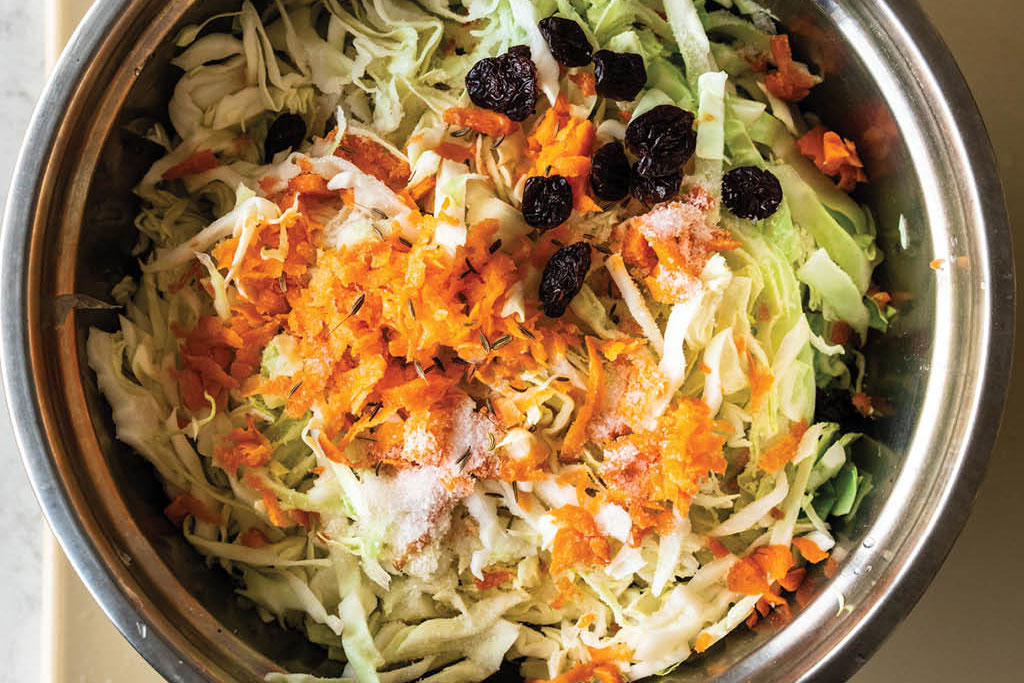Photos by Anna Voloshyna
Sauerkraut is undoubtedly one of the great pillars of Eastern European cuisine.
We eat it raw, braise it, boil it, and fry it. We use it to make savory pies and dumplings and add it raw into soups and stews. Because I have included a few recipes in this book that call for sauerkraut, I also decided to share my go-to homemade sauerkraut recipe. To make it extra flavorful, I always add some caraway seeds and a few dried sour cherries, but if you prefer a cleaner flavor, you can skip one or both of them.

Serves 6-8
Instructions:
- Remove a couple of outer leaves from the cabbage. Rinse them well, pat dry with a paper towel, and set aside. Using a small, sharp knife, cut out the core from the cabbage and discard. Using a large, sharp knife, cut the cabbage in half lengthwise. Using the large knife or a mandoline, slice the cabbage halves crosswise as thinly as you can.
- Put the cabbage into a large bowl and sprinkle with the salt. Using your hands, massage the cabbage until it releases plenty of water. It will take about 5 minutes. Reserve the cabbage water.
- Add the carrot, caraway seeds, and cherries and mix well. Pack the cabbage mixture into a large, widemouthed glass jar and pour over all of the cabbage liquid from the bowl. Tamp down the cabbage mixture with your fist and cover the top with the reserved whole leaves. Set something heavy on top of the leaves. A quart-size plastic deli container or jar filled with salt or water works great for me. The cabbage should be fully submerged in the brine at all times.
- Let the sauerkraut ferment in a cool, dark place (60° to 65°F) for about 1 week. Start tasting the cabbage on day five. When it gets to your desired flavor, remove the weight, cover the jar with a lid, and store the sauerkraut in the refrigerator for up to 6 months.

Recipes excerpted from Budmo! by Anna Voloshyna. Rizzoli, 2022. Photographs by Anna Voloshyna.
1304 Views